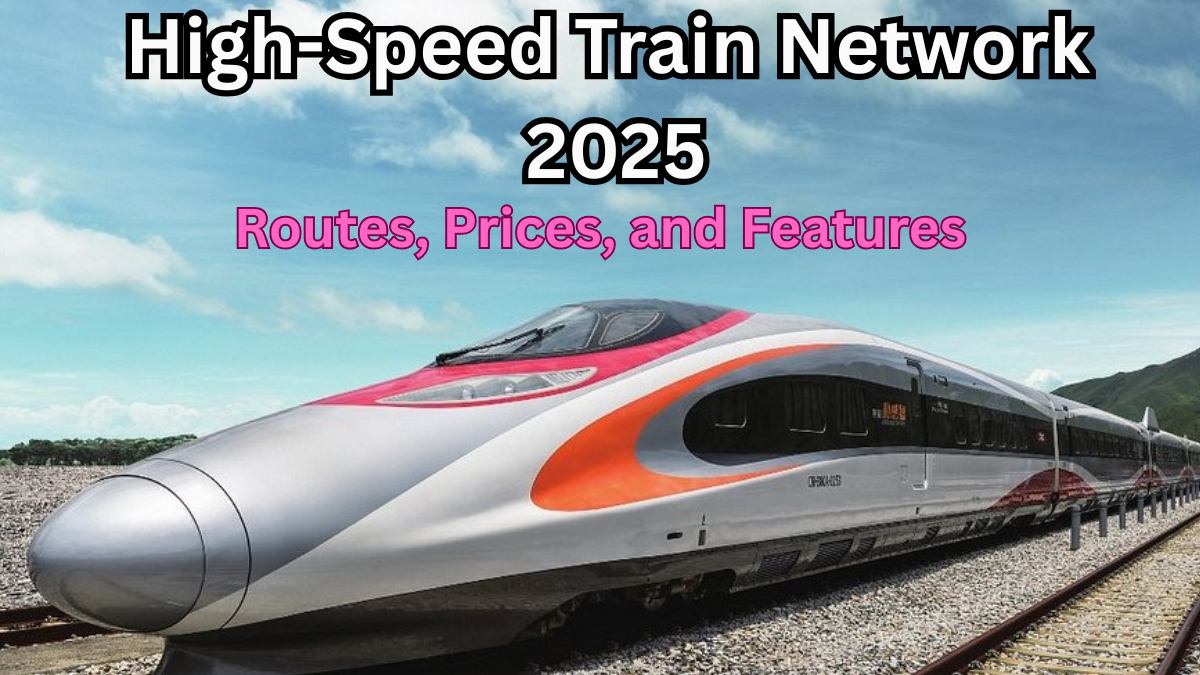India is stepping into a new era of transportation with the High-Speed Train Network 2025. Often referred to as “bullet trains,” this project aims to redefine how we travel by cutting journey times, offering premium comfort, and connecting major cities with world-class infrastructure.
If you’ve ever imagined zipping across states in just a few hours, the dream is finally turning into reality with High-Speed Rail 2025.

Why High-Speed Rail Matters for India
The introduction of the High-Speed Train Network 2025 is not just about speed—it’s about transforming the way Indians travel.
Key Benefits
-
Faster travel: Cut down long journeys from 8–10 hours to just 2–3 hours
-
Comfortable ride: Modern seating, more legroom, and premium onboard services
-
Eco-friendly: Runs on electricity, reducing carbon footprint
-
Boost to economy: Encourages tourism, business travel, and regional growth
Planned Train Routes in India
The government has identified key Train Routes India that will be part of the first phase of High-Speed Rail 2025. These routes aim to connect major metropolitan hubs and high-demand corridors.
| Route | Distance | Expected Travel Time | Status 2025 |
|---|---|---|---|
| Mumbai – Ahmedabad | 508 km | 2–3 hours | Under construction, partial operations expected |
| Delhi – Varanasi | 865 km | 3.5–4 hours | Planning phase |
| Delhi – Ahmedabad | 886 km | 4 hours | DPR under review |
| Chennai – Mysuru | 435 km | 2.5 hours | Feasibility study ongoing |
| Mumbai – Nagpur | 753 km | 3.5 hours | Planning stage |
Ticket Prices for High-Speed Rail 2025
One of the biggest questions passengers have is about the ticket prices. The government is aiming to keep fares competitive with air travel while offering better convenience.
| Route | Estimated Ticket Price | Comparison with Airfare |
|---|---|---|
| Mumbai – Ahmedabad | ₹3,000 – ₹3,500 | Slightly lower than flights |
| Delhi – Varanasi | ₹4,500 – ₹5,000 | Comparable to airfare |
| Chennai – Mysuru | ₹2,500 – ₹3,000 | Similar to flight rates |
Key Features of High-Speed Train Network 2025
The upcoming trains are not just about speed—they are designed for comfort, safety, and a futuristic experience.
Highlighted Features
-
Top speed: Up to 320 km/h
-
Modern interiors: Spacious seating, Wi-Fi, infotainment systems
-
Safety: Equipped with advanced earthquake detection and braking systems
-
Accessibility: Specially designed for elderly and differently-abled passengers
-
Sustainability: Energy-efficient and environment-friendly design
What Makes This Different from Current Travel Options?
Unlike conventional trains and flights, the High-Speed Train Network 2025 will give passengers:
-
No long check-in times like airports
-
Hassle-free boarding from centrally located stations
-
Smooth, quiet, and luxurious journeys
FAQs on High-Speed Train Network 2025
Q1. When will the first high-speed rail in India start operations?
The Mumbai–Ahmedabad corridor is expected to begin partial operations by 2026, with other routes in later phases.
Q2. How much will ticket prices cost compared to flights?
Ticket prices for High-Speed Rail 2025 are expected to be slightly cheaper or comparable to airfares while offering more comfort.
Q3. Which are the first routes under the High-Speed Train Network 2025?
The first routes include Mumbai–Ahmedabad, Delhi–Varanasi, Chennai–Mysuru, and Delhi–Ahmedabad.
Q4. What speed will the bullet trains achieve in India?
The trains are designed to run at a maximum speed of 320 km/h, making them one of the fastest in Asia.
Click here to learn more
